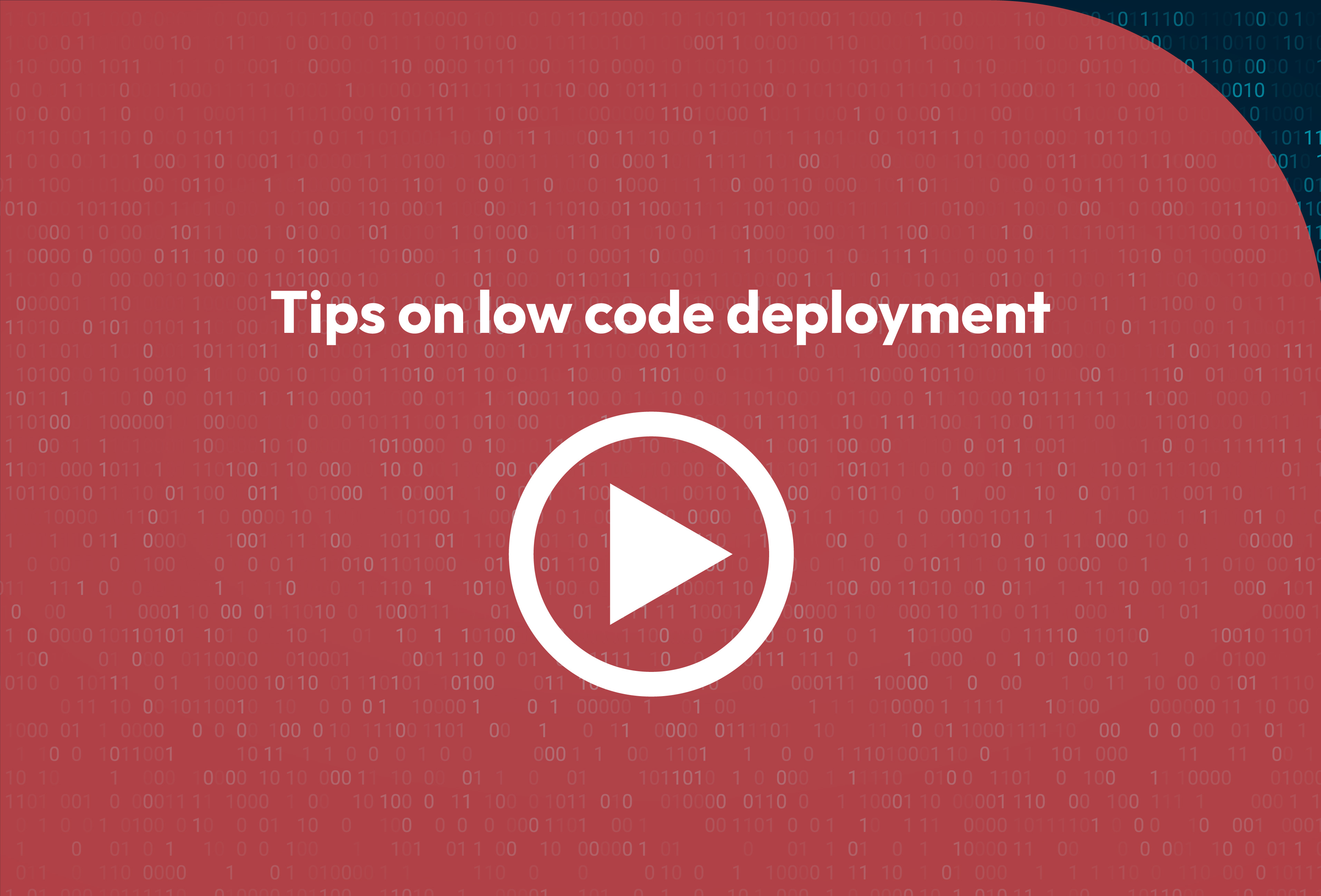By Jason Earnshaw
Jason Earnshaw, ANS Low Code practice lead, explains what a low code ecosystem is and what you need to enable your ecosystem.
Fundamentally, every organisation already has a Low Code Ecosystem, whether you know it or not! Some know about it, some are trying hard to control it, whilst others are unaware and think it is something they can look at when they are ready. Suppose you don’t provide your employees with the right ecosystem and digital innovation capabilities; they will look to do it without you, which becomes a headache somewhere down the line for you.
So, take our low-code ecosystem pill and eliminate that headache before it happens.
But before you do, let’s explain a few things to ensure you know you need to take this prescribed medication earlier than you thought.
What is a Low Code Ecosystem?
How we talk about Low Code in the last 6-12 months has taken a huge shift in the language we use, along with huge advancements in the capabilities at our disposal. It is no longer just about what apps or solutions we can build. We know we can build most things on low-code (whether we should is for a different blog), and you can build it faster than traditional development, which is why most companies are now looking at low-code platforms as a capability to help them modernise their processes and the way they build digital solutions, with the entry-level skillset required to building solutions is getting lower and lower on each new release by Low Code Platform Vendors thanks to the power of in-built artificial intelligence (AI) to guide you on your solution building process.
At Microsoft Ignite 2023, Ryan Cunningham said the following about Low Code in their keynote session, which is so refreshing to hear the change in language:
“Low code is not just about the technology; it’s about everything else. It’s how we rollout low code, it’s how we get people ready for it with skills and capabilities and how we scale it to make a big impact in how companies work.”
Building your portfolio of solutions is very important, but how do you make sure that you, as a business, know who is building the solutions, what they are building and where they are building them? So, thinking about those 3Ws (Who, What, Where), these instantly start correlating against the 4Ps (People, Portfolio, Platform), with the fourth being Process, which are the key elements of the digital transformation framework.
Therefore, when enabling your low-code ecosystem, you need to consider these:
Portfolio:
- What do you want to build?
- What business problems are you trying to solve?
- What is your portfolio vision?
- What is the business value expected or returned from building the solution?
- What is our portfolio backlog, and how do we start tracking it?
People:
- Who are you building these solutions for?
- Who is building these solutions?
- Who is going to support these solutions once built?
- Who will support and administer the platform(s) you have chosen to support the portfolio vision you have laid out?
- Who in your business are the people who “get stuff done”, you know who these are, and these are key people to be part of your community?
- Who is responsible for your low-code vision in your business?
- Who is responsible for leading your charge on your internal communities to share resources, success, and knowledge you have achieved using low code?
Platform:
- What capabilities are available to us in the low-code platforms we have selected or have available?
- Where can we provide safe places for our internal community to start building and learning these capabilities?
- What data and connectors are we allowing people to use?
- What security must we have in place to not put our business at risk providing this capability?
Process:
- Remember, this is essentially a development platform and not Excel.
- Provide best practices, awareness, standards, knowledge, and ways to help your internal community build excellent solutions quickly and safely.
- Provide adaptive governance to suit low-code solution build. DO NOT approach this with the same governance you apply to traditional development.
- At each stage of your journey with Low Code, you will need to consider new processes and evolve existing ones.
It just sounds like digital transformation to me?
But hold on, so are you saying you’re using the word Ecosystem instead of Digital Transformation?
Digital transformation can be a key enabler of your ecosystem growth and collaboration as you provide low-code technology to allow groups of individuals to connect and work together to create and deliver value to your customers, suppliers or whomever you interact with as a business. In our mind, digital transformation has a start and end; as with an ecosystem, it never ends, it just keeps getting bigger and better as more and more people come and embrace it, but before that happens, you need to make sure you have the right building blocks in place.
Imagine building a city and not having any foundation, structure, rules, or processes in place; it would just be a free for all and become the “wild west”.
How to get started with your Low Code Ecosystem Journey?
Don’t worry; we know how to help you start on your journey or even help you build the structure needed before you scale with low-code capabilities. No matter where you are on your low-code journey, we can help define, educate, strategies and deploy your low-code ecosystem priority list.
Contact us to understand more about our Low Code Ecosystem Navigator.





